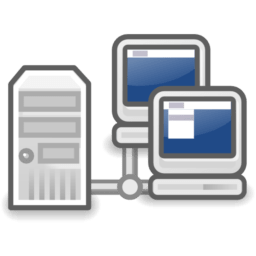Most Commented
Automating Learning and Development within The Organisation




Description material

Automating Learning and Development within the Organisation
Published 10/2024
Duration: 1h10m | .MP4 1280x720, 30 fps(r) | AAC, 44100 Hz, 2ch | 1.01 GB
Genre: eLearning | Language: English
Streamline Employee Training
What you'll learn
Identify the LMS platform to automate training and development
Implement instructional design principles when creating online module
Use tools for creating digital content
Apply for curriculum transfer to digital platforms
Learn how to automate learning and development within the organisation
Requirements
Learners must assume roles related to training, human resources, or organisational development
Learners may need a background in human resources, organisational development, or a related field
Understanding of organisational structures, employee roles, and performance management may be beneficial
Tech-savvy
Description
Training and education are evolving rapidly, driven by the impact of the Covid-19 pandemic and changing learner demographics. Technological advancements like adaptive learning, automated interventions, dynamic digital content, and mobile technology have opened up new possibilities for training and development, especially for Generation Y and Generation Z.
In Learning and Development (L&D), automation uses technology to streamline tasks such as content creation, training delivery, and assessments. It allows for instant feedback, personalised learning paths, and data-driven analytics, leading to greater efficiency, scalability, and personalised learning experiences. This, in turn, enhances both learning outcomes and organisational performance.
A Learning Management System (LMS) is software designed to manage, document, track, report, automate, and deliver educational courses or training programs. Beyond automating the training process, an LMS accelerates the learning experience, making it easier for learners to access and complete their training.
Automation in L&D improves the efficiency, effectiveness, and scalability of employee training. Tools like software platforms, artificial intelligence, and data analytics optimise content creation, training delivery, and performance tracking. For instance, LMS platforms can automate tasks such as administration, documentation, and reporting, while AI tools can personalise training content to meet individual employee needs. Automation also enables employees to access training materials on-demand, helping them stay current with new skills.
Moreover, automation allows training programs to scale effectively, maintaining consistent quality across larger groups of employees, regardless of location. This is particularly valuable for global companies, as it saves time and resources compared to traditional in-person training methods. Overall, automation helps organisations develop their workforce more efficiently, supporting business goals while boosting engagement and performance.
Who this course is for:
HR Personnel
Training Coordinator
Trainers
Facilitators
More Info

What you'll learn
Identify the LMS platform to automate training and development
Implement instructional design principles when creating online module
Use tools for creating digital content
Apply for curriculum transfer to digital platforms
Learn how to automate learning and development within the organisation
Requirements
Learners must assume roles related to training, human resources, or organisational development
Learners may need a background in human resources, organisational development, or a related field
Understanding of organisational structures, employee roles, and performance management may be beneficial
Tech-savvy
Description
Training and education are evolving rapidly, driven by the impact of the Covid-19 pandemic and changing learner demographics. Technological advancements like adaptive learning, automated interventions, dynamic digital content, and mobile technology have opened up new possibilities for training and development, especially for Generation Y and Generation Z.
In Learning and Development (L&D), automation uses technology to streamline tasks such as content creation, training delivery, and assessments. It allows for instant feedback, personalised learning paths, and data-driven analytics, leading to greater efficiency, scalability, and personalised learning experiences. This, in turn, enhances both learning outcomes and organisational performance.
A Learning Management System (LMS) is software designed to manage, document, track, report, automate, and deliver educational courses or training programs. Beyond automating the training process, an LMS accelerates the learning experience, making it easier for learners to access and complete their training.
Automation in L&D improves the efficiency, effectiveness, and scalability of employee training. Tools like software platforms, artificial intelligence, and data analytics optimise content creation, training delivery, and performance tracking. For instance, LMS platforms can automate tasks such as administration, documentation, and reporting, while AI tools can personalise training content to meet individual employee needs. Automation also enables employees to access training materials on-demand, helping them stay current with new skills.
Moreover, automation allows training programs to scale effectively, maintaining consistent quality across larger groups of employees, regardless of location. This is particularly valuable for global companies, as it saves time and resources compared to traditional in-person training methods. Overall, automation helps organisations develop their workforce more efficiently, supporting business goals while boosting engagement and performance.
Who this course is for:
HR Personnel
Training Coordinator
Trainers
Facilitators
More Info

Warning! You are not allowed to view this text.
Warning! You are not allowed to view this text.
Warning! You are not allowed to view this text.
Join to our telegram Group
Information
Users of Guests are not allowed to comment this publication.
Users of Guests are not allowed to comment this publication.
Choose Site Language
Recommended news
Commented


![eM Client Pro 9.2.1735 Multilingual [Updated]](https://pikky.net/medium/wXgc.png)






![Movavi Video Editor 24.0.2.0 Multilingual [ Updated]](https://pikky.net/medium/qhrc.png)

